For artists, the choice of color is essential in creating a unique and compelling work of art. Every color has its unique characteristics that can evoke different emotions and moods. Cobalt Turquoise has found its place in the artist’s palette is versatile and vibrant. In this article, we will explore this color’s use and significance in the art world, providing insights into why it continues to be a popular choice among artists.
Cobalt Turquoise by different brands
Find 5 manufacturer(s) of watercolors below. We’ve also compiled a list of our favorite art supplies here.
Cobalt Turquoise – Daniel Smith
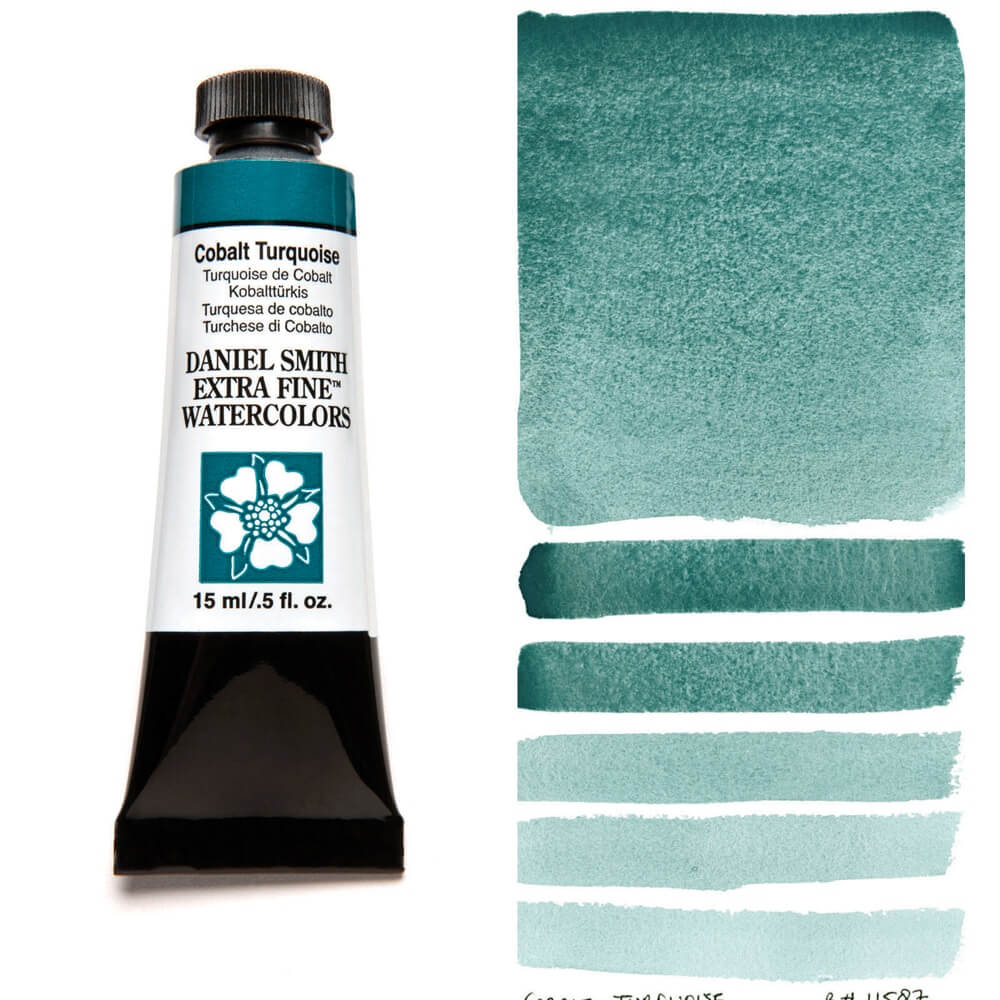
A predictable non-staining teal blue with muscle and the presence to stand alone, but when used in a glaze or wash it blends with incredible ease. Because of it’s slight granulation you can achieve multi-layers and tone on tone effects to delight and surprise with each addition or stroke.
| Color No.: | Lightfastness:I – Excellent | Opacity:Semi-Transparent |
| Staining: 1-Non-Staining | Granulation: | Sizes: 15ml tubes; Half Pans |
Cobalt Turquoise – Winsor & Newton
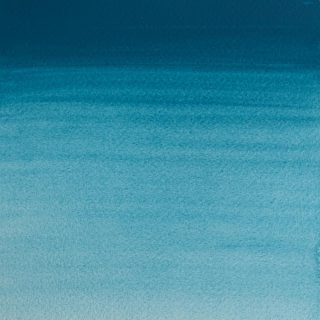
Cobalt Turquoise is a blend of blue and green pigments. The name stems from the French ‘Turquoise’ for the semi-precious stone that was exported to Europe from Persia via Turkey.
| Color No.: 190 | Lightfastness:I – Excellent | Opacity:Semi-Opaque |
| Staining: | Granulation: | Sizes: 5ml tubes; 14ml tubes; Half Pans |
Cobalt Turquoise Blue – Rembrandt
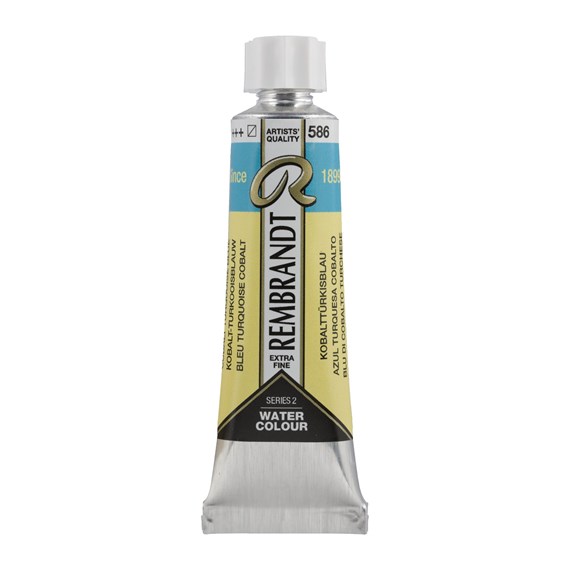
| Color No.: 586 | Lightfastness: | Opacity:Semi-transparent |
| Staining: | Granulation: | Sizes: Tube 10 ml |
Cobalt Turquoise Green – Rembrandt
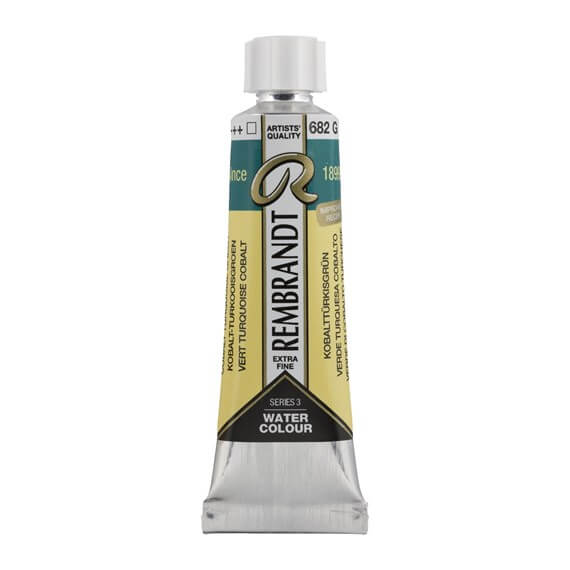
| Color No.: 682 | Lightfastness: | Opacity: Transparent |
| Staining: | Granulation: | Sizes: Tube 10 ml |
Cobalt Turquoise Light – Winsor & Newton
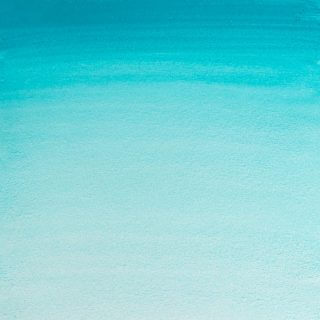
| Color No.: 191 | Lightfastness: | Opacity: Semi-Opaque |
| Staining: | Granulation:Granulation | Sizes: 5ml tubes; 14ml tubes; Half Pans |
Tips when choosing colors
When it comes to choosing colors for watercolor painting, there are a few tips to keep in mind. First, consider the color wheel and how different colors interact with each other. Understanding complementary colors, warm and cool tones, and color harmonies can help you create dynamic and visually appealing artworks. Additionally, think about the subject matter and the mood you want to convey. For example, if you are painting a landscape, you may want to choose greens and blues for a calming and natural feel. Lastly, experiment with different brands and pigments to find colors that suit your style and technique. Remember, the color choices you make can greatly impact the overall look and feel of your artwork, so take your time and choose wisely.
Also read, watercolor essentials to see which colors are essential
History of Cobalt Turquoise
Cobalt Turquoise is a stunning watercolor tone that is made by mixing cobalt blue and a green pigment, giving it its unique turquoise hue. It is a relatively new color, introduced in the mid-20th century as a more affordable and lightfast substitute for genuine turquoise, which was rare and expensive.
Cobalt Turquoise is known for its clarity, brightness, and lightfastness, making it a popular choice among watercolor artists. It is often used in landscapes and seascapes to create a sense of depth and atmosphere, as well as in floral and still-life paintings to add a pop of color.
Fun fact: Cobalt Turquoise was used by the famous American painter Georgia O’Keeffe in many of her paintings, including her iconic painting “Sky Above Clouds IV.” O’Keeffe was known for her use of bold and vibrant colors, and Cobalt Turquoise was one of the colors she used to create her signature style.
How watercolor paint is made
Watercolor paint is typically made from a few simple ingredients:
- pigments
- binders
- water

The pigments used in watercolor paints can be organic or inorganic compounds, such as minerals or synthetic chemicals. These pigments are finely ground and then mixed with a binder, which helps the pigment particles adhere to the paper when the paint is applied.
The most common binder used in watercolor paints is gum arabic, a natural resin extracted from the sap of the acacia tree. Gum arabic is mixed with the pigment to create a thick paste, which is then combined with water to create the final paint.
Other additives may be added to the paint to improve its performance or create specific effects. For example, some watercolor paints may include wetting agents to help the paint spread more evenly on the paper, or preservatives to extend the paint’s shelf life.

Watercolor paints are available in a wide range of colors and textures, from transparent washes to opaque and granulated pigments. Different
manufacturers may use slightly different formulations or ingredients in their paints, which can affect the quality and performance of the paint.
If you’re interested in learning about other colors, check out our pages on Aqua Green, Cobalt Green, and Cobalt Green Deep, which provide in-depth information on these colors and their various shades.
